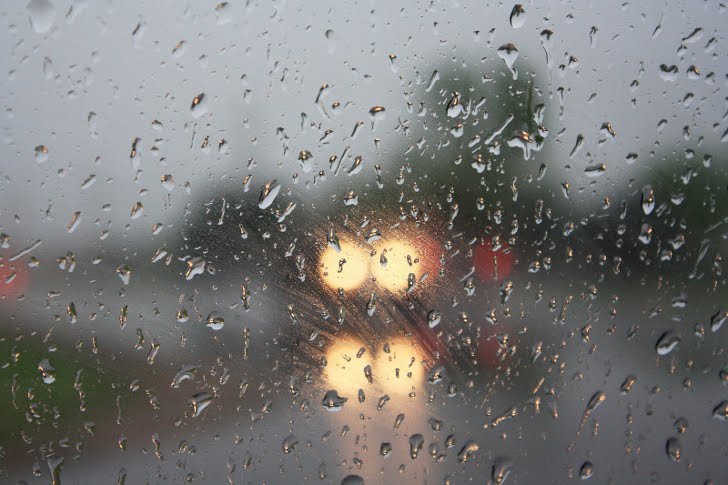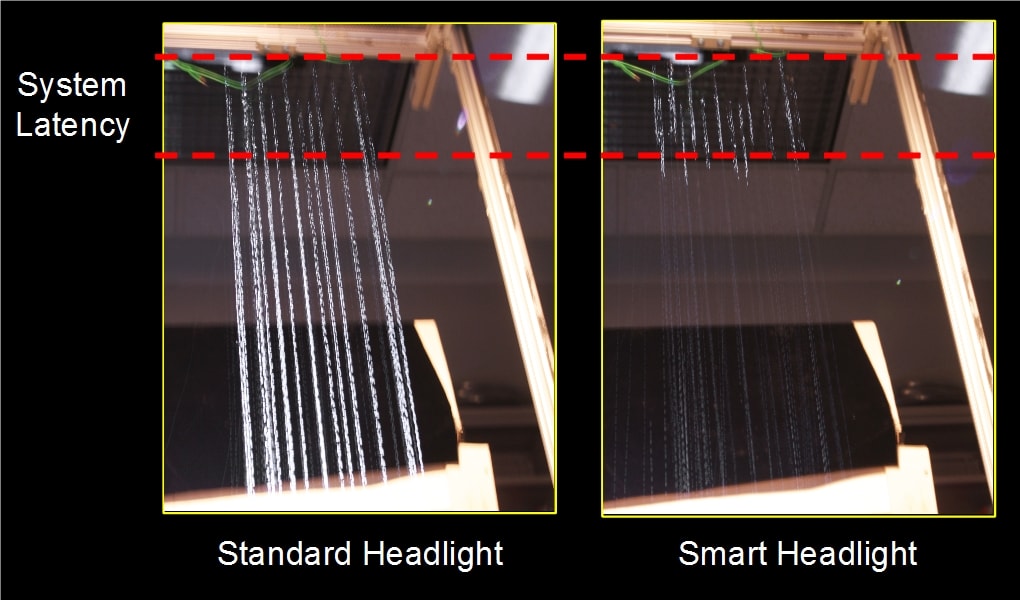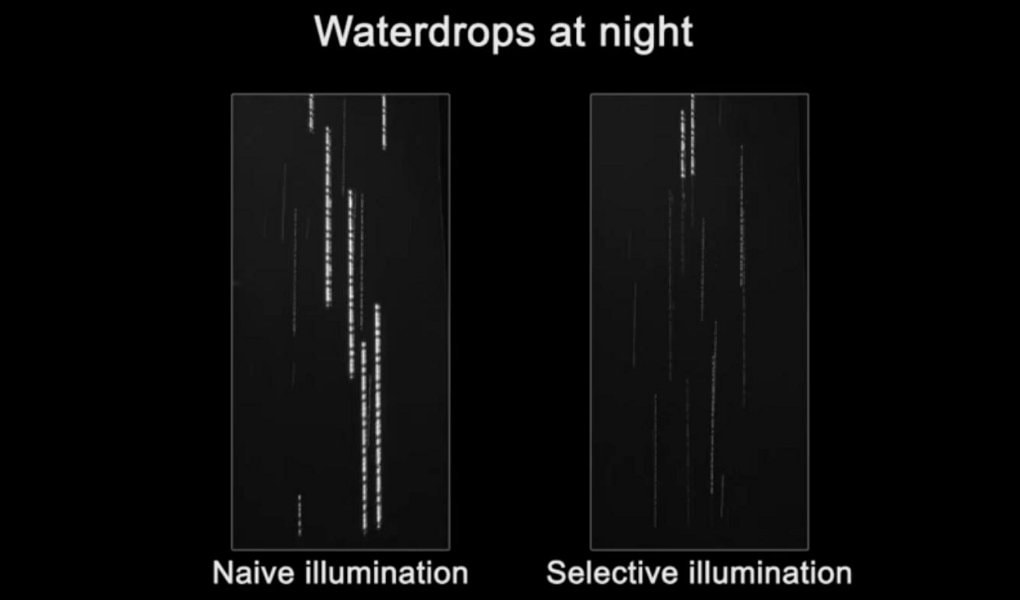Bad weather, regardless if we’re talking about fog, rain or snow, dramatically affects traffic, but what’s even worse is that it has a negative impact on the safety of each motorist too.
Car manufacturers have struggled to fight adverse weather for years, but what seems to be one of the most effective ideas ever was invented by researchers at Carnegie Mellon University's Robotics Institute.
Still in prototype stage, the so-called “smart headlights” were developed to improve drivers’ visibility during rain or snow, using innovative technology to make the drops… well… invisible.
It sounds like magic and it really is at some level. The whole system works in a way that significantly reduces glare whenever the headlight beams are reflected from raindrops or snowflakes back to the driver, regardless of the current speed.
HOW IT WORKS
As we said, the whole idea behind this new technology is to make the raindrops “invisible”. What it does is to actually illuminate the raindrops while the pass the driver’s field of view. It sounds a bit complicated, but let’s take everything one at a time.
Rain is such a dangerous weather event not only because of the wet pavement, but also because of the reduced visibility, regardless of the headlights system or the windshield wipers you are using.
Visibility is obviously affected because the raindrops fall on the windshield, but it’s more important to know that the overall glare produced by the headlight beams, which reflect from the raindrops back to the driver, has a great contribution to this major visibility reduction.
In order to address this issue, the researchers developed a system that uses a high-speed projector to track each raindrop and predict its direction. Using this data, the headlights beams are then automatically turned off at an imperceptible speed and remain so until the raindrop gets out of the driver’s field of view.
The technology, which consists of the aforementioned projector, a camera and 50/50 beamsplitter, works at an extraordinary speed, with a capture to reaction time of just 13 ms. That means it’s almost impossible for the driver to notice anything, with the only visible result represented by the lack of glare and obviously improved visibility. To better understand the way the technology predicts the position of the raindrop you’re highly recommended to watch the video below.
There are some limitations though and the system becomes less effective as you increase speed. With an operating range of three to four meters in front of the projector, which is estimated as the range with the most powerful glare, the technology loses accuracy points as the driver presses the throttle.
For example, researchers estimate that the smart headlights can reduce glare by up to 70 percent at a speed of 30 km/h (18 mph), while at 100 km/h (62 mph) accuracy drops to 15 percent.
According to data published by the US Department of Transportation, using 14-year averages analyzed by Noblis and based on NHTSA data, 24 percent of all crashes (which is more than 1.5 million) are weather-related. What’s more, more than 7,000 people are killed every year because of adverse weather, while nearly 630,000 people are injured because of the same reason.
Rainfall remains one of the main causes of accidents that take place in the United States: 75 percent of the crashes took place on wet pavement, while 47 percent happened during rainfall. Paradoxically, winter is much friendlier to drivers, as only 15 percent of the accidents were registered during snow.
If we are to judge by annual rates, rain accounts for 707,000 crashes, which represents 11 percent of all vehicle crashes. More than 303,000 people are injured every year because of rain, while 3,300 people lose their lives due to bad weather.
Driving at night during heavy rain can be pretty dangerous. Notice the reduced visibility provided by the standard headlights.
Leaving all these unfortunate figures aside, rain and snow obviously affect speed and traffic too. For example, speed drops by 3 to 13 percent on highways during light rain, while heavy rain reduces speed by up to 16 percent. What’s more, travel time can increase by up to 50 percent during heavy rain or in case of wet pavement.
To sum up, these smart headlights can have a great contribution to a safer traffic, at least in case they get the green light for production. Still, since it’s in early development stages, this particular technology is quite expensive, so unless a cheaper alternative that could be fitted on mass-produced car is developed, it’s hard to image that it could reach the public streets anytime soon.
Rain is such a dangerous weather event not only because of the wet pavement, but also because of the reduced visibility, regardless of the headlights system or the windshield wipers you are using.
Visibility is obviously affected because the raindrops fall on the windshield, but it’s more important to know that the overall glare produced by the headlight beams, which reflect from the raindrops back to the driver, has a great contribution to this major visibility reduction.
In order to address this issue, the researchers developed a system that uses a high-speed projector to track each raindrop and predict its direction. Using this data, the headlights beams are then automatically turned off at an imperceptible speed and remain so until the raindrop gets out of the driver’s field of view.
The technology, which consists of the aforementioned projector, a camera and 50/50 beamsplitter, works at an extraordinary speed, with a capture to reaction time of just 13 ms. That means it’s almost impossible for the driver to notice anything, with the only visible result represented by the lack of glare and obviously improved visibility. To better understand the way the technology predicts the position of the raindrop you’re highly recommended to watch the video below.
There are some limitations though and the system becomes less effective as you increase speed. With an operating range of three to four meters in front of the projector, which is estimated as the range with the most powerful glare, the technology loses accuracy points as the driver presses the throttle.
For example, researchers estimate that the smart headlights can reduce glare by up to 70 percent at a speed of 30 km/h (18 mph), while at 100 km/h (62 mph) accuracy drops to 15 percent.
WHY WE NEED IT
There’s no doubt that rain and snow seriously affect traffic safety, but when it comes to official figures, it’s all very shocking.According to data published by the US Department of Transportation, using 14-year averages analyzed by Noblis and based on NHTSA data, 24 percent of all crashes (which is more than 1.5 million) are weather-related. What’s more, more than 7,000 people are killed every year because of adverse weather, while nearly 630,000 people are injured because of the same reason.
Rainfall remains one of the main causes of accidents that take place in the United States: 75 percent of the crashes took place on wet pavement, while 47 percent happened during rainfall. Paradoxically, winter is much friendlier to drivers, as only 15 percent of the accidents were registered during snow.
If we are to judge by annual rates, rain accounts for 707,000 crashes, which represents 11 percent of all vehicle crashes. More than 303,000 people are injured every year because of rain, while 3,300 people lose their lives due to bad weather.
Driving at night during heavy rain can be pretty dangerous. Notice the reduced visibility provided by the standard headlights.
Leaving all these unfortunate figures aside, rain and snow obviously affect speed and traffic too. For example, speed drops by 3 to 13 percent on highways during light rain, while heavy rain reduces speed by up to 16 percent. What’s more, travel time can increase by up to 50 percent during heavy rain or in case of wet pavement.
To sum up, these smart headlights can have a great contribution to a safer traffic, at least in case they get the green light for production. Still, since it’s in early development stages, this particular technology is quite expensive, so unless a cheaper alternative that could be fitted on mass-produced car is developed, it’s hard to image that it could reach the public streets anytime soon.





